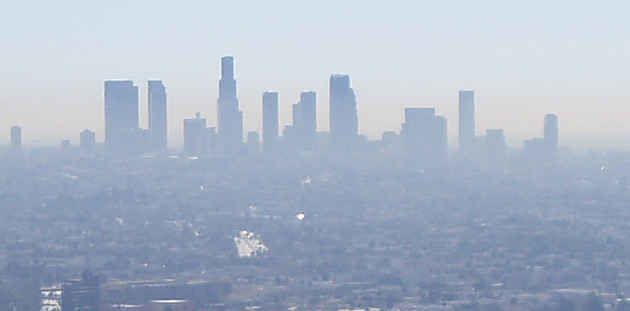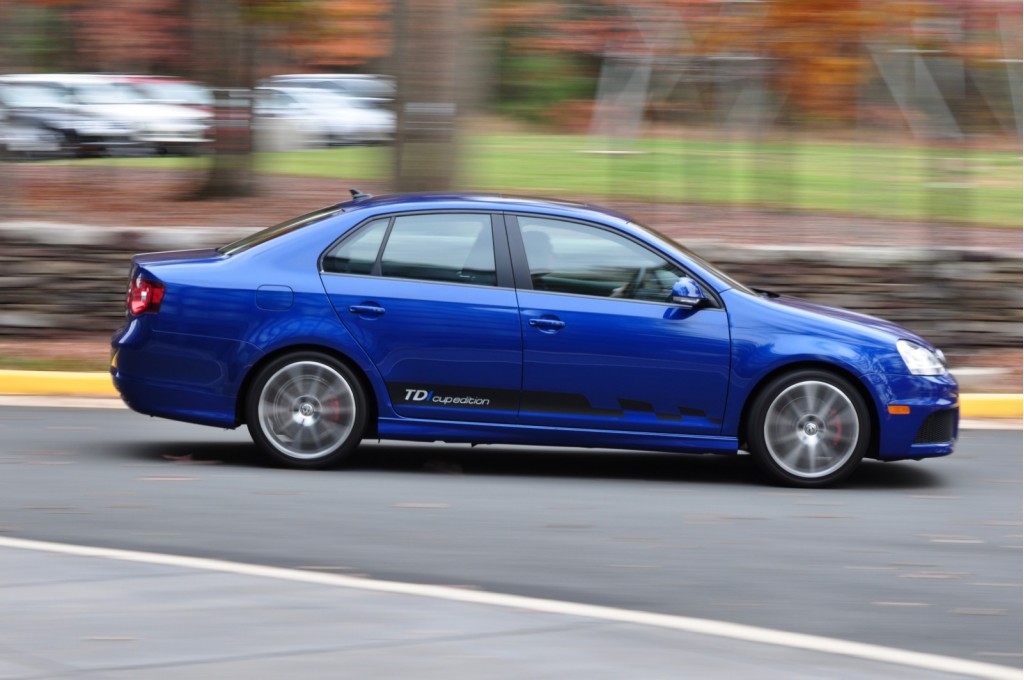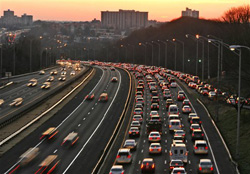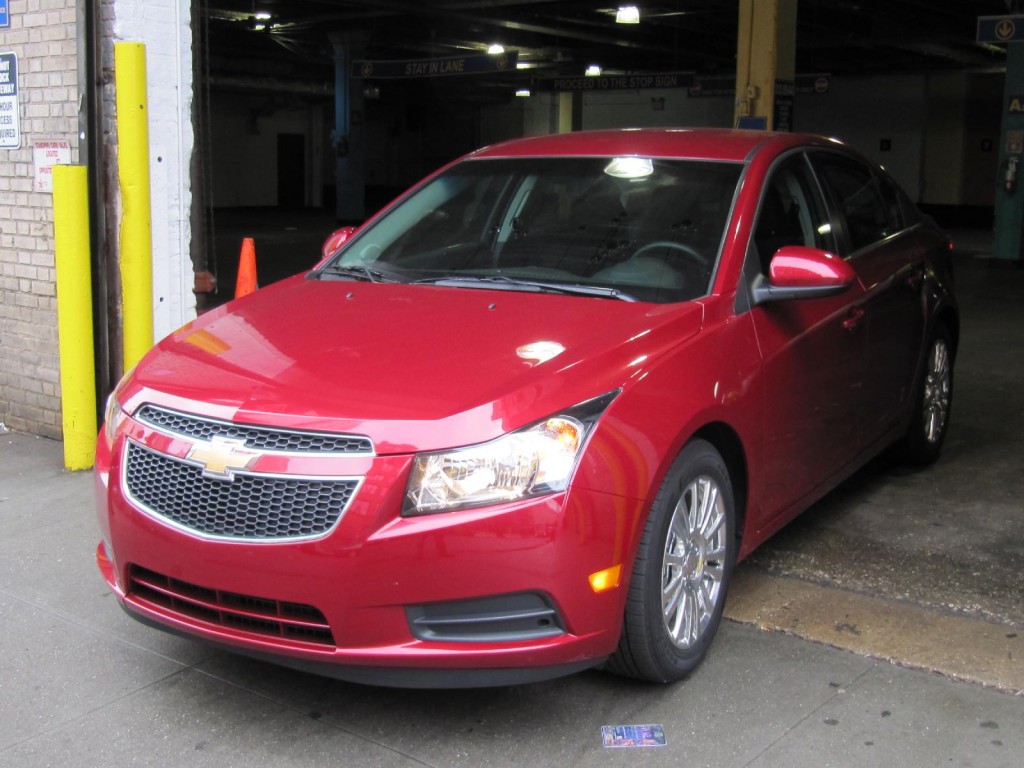It's widely accepted in the auto industry that all manufacturers game the test cycles used to establish emissions and gas-mileage ratings.
Ask auto engineers about the topic, and they tend to get a faraway look and go silent.
But the test cycles established in 1978 and used ever since are far from the reality of U.S. driving in 2011. This means the results have to be manipulated using various "adjustment factors" to have any semblance of real-world relevance.
One minute to 50 mph
Take acceleration, for instance. How fast does your car go from 0 to 60 mph?
If it's a standard family sedan or crossover utility vehicle, the answer is probably 9 to 13 seconds, depending on its engine and how aggressive a driver you are.
The EPA, on the other hand, thinks it takes more than a minute to accelerate from 0 to ... 50 mph.
Top speed: 60 mph

Los Angeles Smog
And the top speed on the highway test cycle is 60 mph, which may have made sense when the national limit was 55 mph, but is ludicrously low today. When's the last time you saw average highway speeds of just 48 mph?
Consider that data gathered several years ago from several hundred cars in the Los Angeles Basin found that when freeway traffic was flowing smoothly (it doesn't always), the average vehicle traveled at a speed of more than 80 mph. That's an average vehicle, mind you, not the fastest one.
It gets worse. Three decades ago, air conditioning was still a high-end option, rather than the virtually standard feature it is today on North American vehicles. But neither AC or heaters are switched on in any test cycle.

mustang window sticker
While the EPA is in the process of converting over to new, more representative test cycles to get the ratings you see on new-car window stickers, that's not the case for the NHTSA, which specifies the CAFE ratings carmakers must achieve.
The tests to determine Corporate Average Fuel Economy (CAFE) ratings--which will rise to 54.5 mpg by 2025--rely on the old cycles, and hence are increasingly divorced from reality.
Unrealistic hybrids ...
Historically, the EPA had to make additional adjustments for new technologies, including hybrid-electric vehicles that can run on electricity alone under some circumstances.
During the last decade, the test cycles were so unaggressive that hybrids spent far more time in electric mode on the tests than in the real world, producing wildly high ratings that few owners came anywhere close to.
Public complaints finally forced the EPA to revise its adjustment factors in late 2007, lowering hybrid fuel economy to levels closer to what owners actually achieved.
... but penalties for diesels?

2010 Volkswagen Jetta TDI Cup Street Edition
On the other hand, owners of diesel-engined cars have complained for years that the EPA ratings are too pessimistic, and that owners of Volkswagen Jetta TDIs see far higher real-world mileage than the EPA number indicate.
Finally, the outmoded procedures actually penalized some new technologies. Consider the start-stop feature, which simply turns off the car's engine when it's stopped, then switches it back on when the driver starts to lift a foot off the brake.
According to Robert Davis, senior vice president at Mazda's U.S. arm, the company would like to introduce its iStop technology to North America as it rolls out its new line of ultra-efficient SkyActiv engines and transmissions.

2012 Mazda3 SkyActiv 2.0
But thus far, it won't, because the gain on the CAFE cycles would only be 0.1 or 0.2 mpg, not enough to justify a cost of a few hundred dollars--despite fuel savings of up to 10 percent in dense urban stop-and-go traffic. The city cycle is mostly quick stops, like those for stop signs, with only a few lengthy stops as you would get at a traffic signal.

Traffic
How to game the system
As for gaming the system, if we had to guess, we'd suggest that carmakers know how to take advantage of the exceptionally slow acceleration and low top speeds of the test cycles. They most likely tune their engines to provide just enough power at low speeds, and set their transmissions to upshift quickly.
Both measures raise the fuel efficiency of a vehicle above what people who drive today generally get. But that's how the tests can produce highway ratings of 40 mpg or more for compact cars.

2011 Chevrolet Cruze Eco, New York City, March 2011
While drivers may see those efficiencies at steady speeds on flat roads--as we did in a 2011 Chevy Cruze Eco with six-speed manual--that's just one small part of a real-world driving cycle, and for most people, probably a fairly small one.
Meanwhile, if any auto engineers out there would like to educate us further ... we're all ears.
+++++++++++













